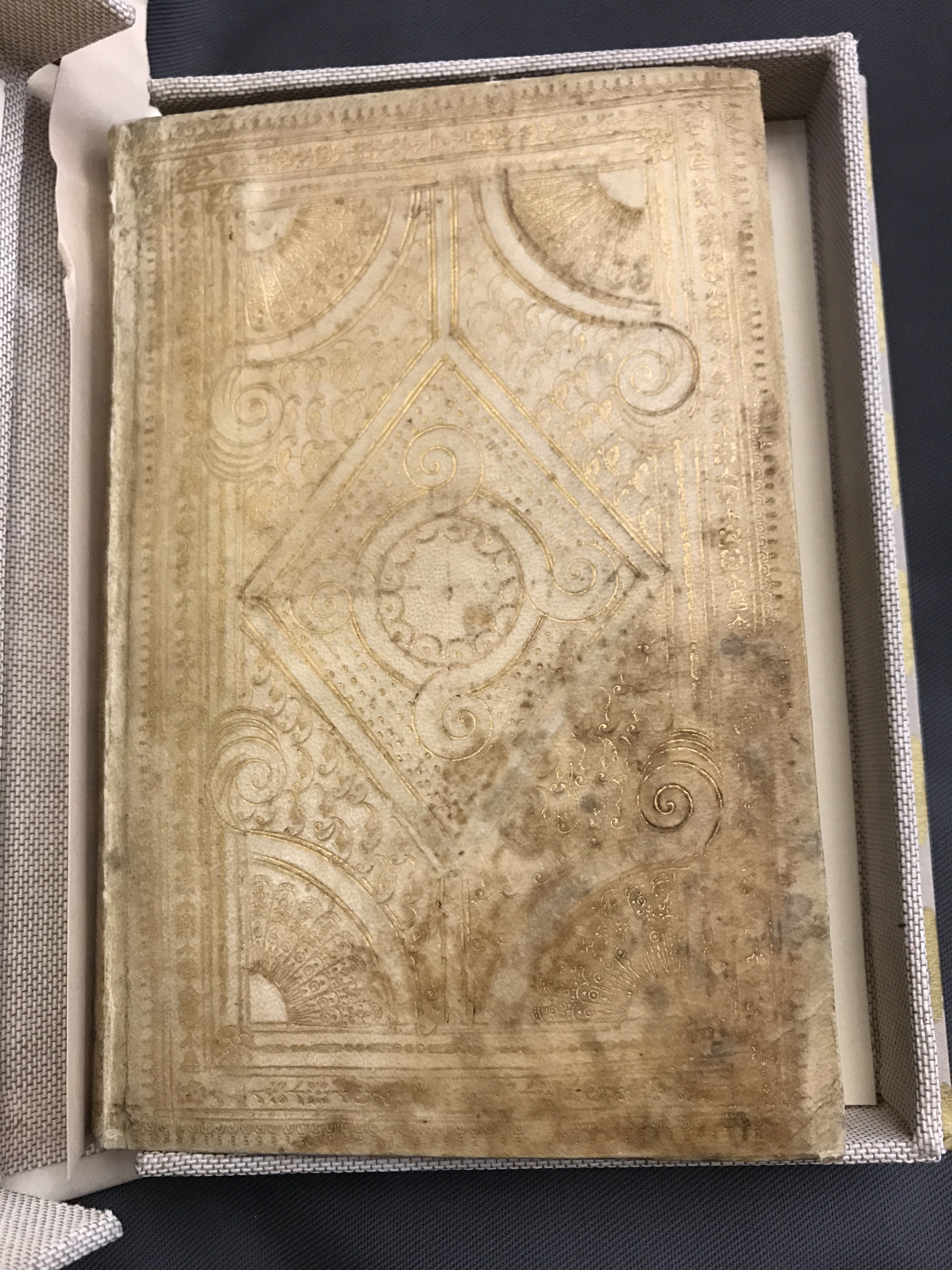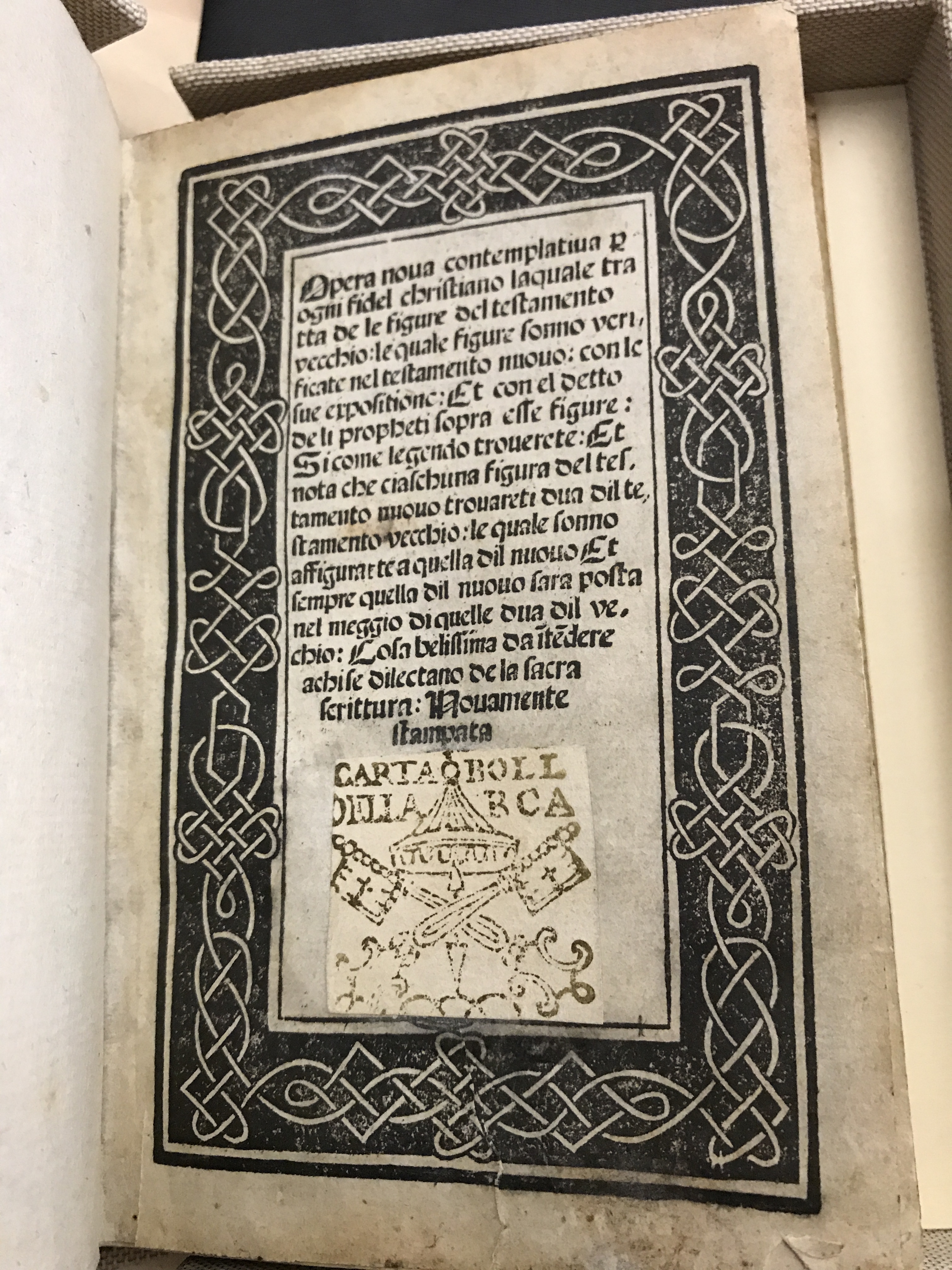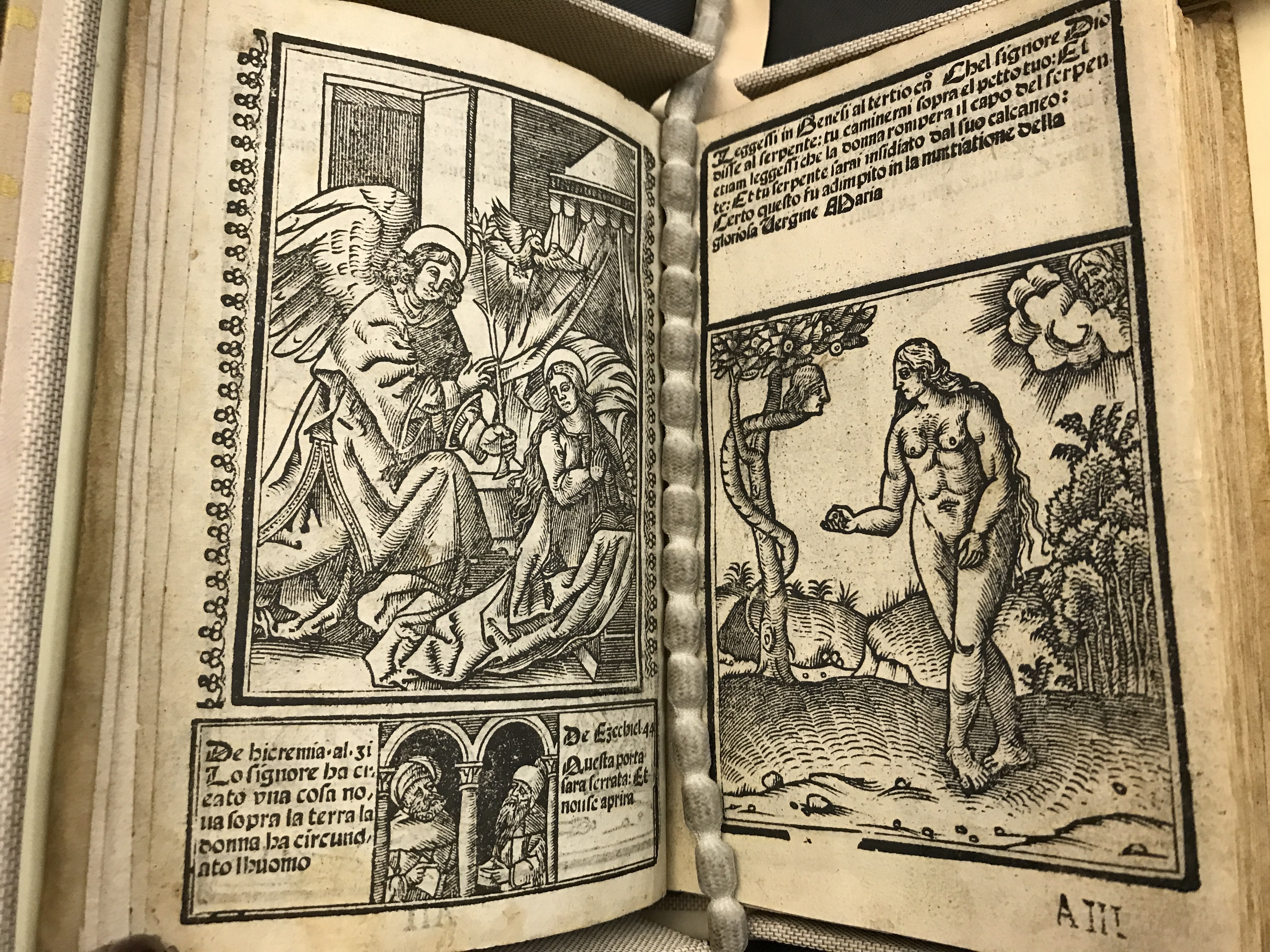
Figure 1: Front cover of the book featuring elaborate gold embossing on pigskin.

Figure 2: Title page in Italian with knotwork border.

Figure 3: Woodcut of the Annunciation and the Serpent addressing Eve.
Opera noua contemplatiua p[er] ogni fidel christiano laquale tratta de le figure del testamento vecchio, Andrea Vavassori (1530)
The Opera nova contempliua, as it is also known, is an imitation Biblia pauperum that measures 16 cm and features 120 woodcut illustrations with text printed in Italian in gothic letters on a total of 128 pages.1 It is believed to have been printed around 1530 by Giovanni Andrea Valvassori in Venice which is stated on the colophon.2 The book has a full pig skin binding and features elaborate gold stamping and tooling on the spine, front and back covers. While the line work of the cover is regular and even, the details like the dotting are less so signifying that the details may have been done by hand.
The title page features a tipped in crest under the title. The pages are printed on both sides and as a result have show through. There are remnants of the collation formula on each recto page signifying that there are a total of 8 signatures labelled A-H. The signatures are sewn together and have a green thread on the headband and tailband. A woodcut of the Virgin Mary with a baby Jesus Christ surrounded by angels is the last image printed followed by a blank page.
The woodcuts have decorative borders that section off the printed text from the images. There are 3 types of borders, the first is a simple line work, the second is a chain of flowers and the third is a knotwork border. The knotwork borders are only present on the title and colophon pages. Aside from the two woodcuts on the pages there are also instances in which there are two figures sectioned off on the bottom of the page that appear to be engaged in conversation. The text in those sections are excerpts from bible passages.
Biblia pauperum are block book forms that placed illustrations as the main focus of the book of the text while the biblical passages took a secondary place of importance. Despite the name, the Biblia pauperum or the Paupers’ Bibles, are thought to have been used primarily by clergy that could not afford more intricately illuminated manuscripts.3 They were usually printed in vernacular language to be more accessible which can be seen in the Italian in which the Opera noua contemplatiua is printed. It uses woodcuts to draw thematic connections between the Old and New Testaments, sometimes the Old Testament imagery fortelling what happens in the New Testament image. 4
Traditionally done using three images as a sort of triptych, the Opera noua contempliua differs in that it uses only two images. It places the New Testament iconography on the verso page and the Old Testament ones on the recto. Figure 3, for example, has an image of the Annunciation on the verso page and the Serpent speaking to Eve on the recto. The size and portability of the Opera noua contemplatiua coupled with the formatting of the text and images made God’s word more accessible to the to the everyday person. Being printed in Italian meant the bible excerpts and captions could be read by and to someone with little education. For those with no education the Biblia pauperum provided iconic imagery that aided in the proliferation of the word of God.
Further Reading
UCLA Library: The Opera noua contemplatiua is readily available for further study at the UCLA Library Special Collections.
Library of Congress: The Library of Congress holds a copy of the Opera noua contemplatiua that is bound differently and differs in the way it was printed.
The Warsaw Institute Iconographic Database: The Warsaw Institute Iconographic Database is an ongoing project that provides digitized images from texts within the Warsaw Institute's collections that demonstrates the power of the codification of religious imagery.
References Cited
1“Opera Noua Contemplatiua p[Er] Ogni Fidel Christiano Laquale Tratta de Le Figure Del Testamento Vecchio : Le Quale Figure Sonno Verificate Nel Testamento Nuouo Con Le Sue Expositione et Con El Detto de Li Propheti Sopra Esse Figure Si Come Legendo Trouerete : Et Nota Che Ciaschuna Figura Del Testamento Nuouo Trouareti Dua Dil Testamento Vecchio, Le Quale Sonno Affiguratte a Quella Dil Nuouo, et Sempre Quella Dil Nuouo Sara Posta Nel Meggio Di Quelle Dua Dil Vecchil : Cosa Belissima Da i[n]Tendere Achise Dilectano de La Sacra Scrittura,” UCLA Library, Accessed March 4, 2018. http://link.library.ucla.edu/portal/Opera-noua-contemplatiua-per-ogni-fidel/tCwsb9UJjqA/.↩
2 UCLA Library, "Opera Noua Contemplatiua."↩
3 “Biblia Pauperum,” Wikipedia, Accessed February 23, 2018, https://en.wikipedia.org/w/index.php?title=Biblia_pauperum&oldid=827139323.↩
4 “What was the Biblia Pauperum?,” The Internet Biblia Pauperum, Accessed March 4, 2018, http://amasis.com/biblia/what.html.↩
This spotlight exhibit by Erika Esquivel as part of Dr. Johanna Drucker's "History of the Book and Literacy Technologies" seminar in Winter 2018 in the Information Studies Department at UCLA.
For documentation on this project, personnel, technical information, see Documentation. For contact email: drucker AT gseis.ucla.edu.